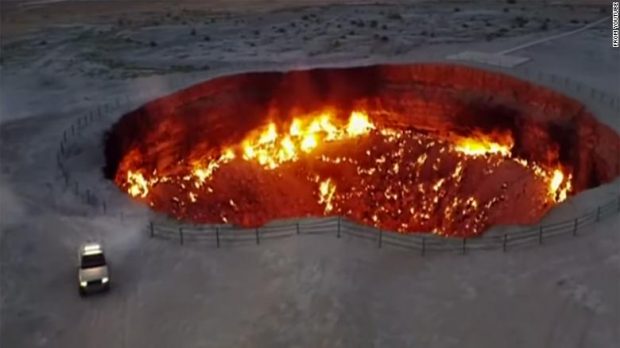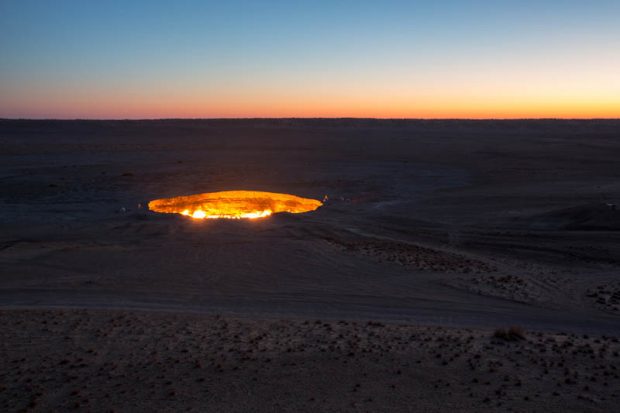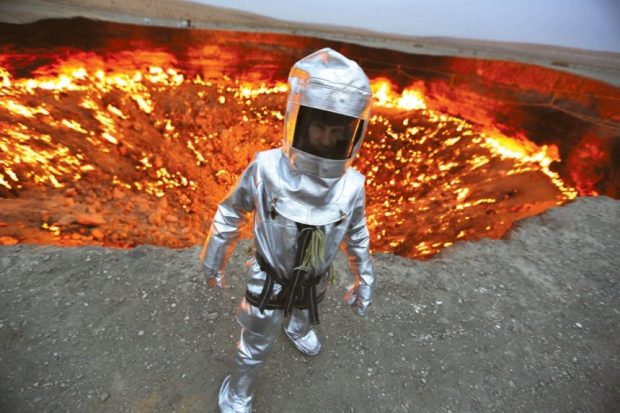Turkmenistan president calls for extinguishing “Gateway to Hell”

Berdymukhamedov skids round the flaming pit in a rally car
ASHGABAT: Turkmenistan’s President Gurbanguly Berdymukhamedov has asked experts to find a way to extinguish a massive five-decade old fire in a huge natural gas crater in the Central Asian country, dubbed the “Gateway to Hell”.
Chairing the first online meeting of the cabinet in 2022, Berdymukhamedov called for a solution to extinguish the burning gas crater.
“For several years now, in the region of Darwaza, a huge amount of gas has been burning and the given circumstances reflect negatively on both ecology and on the health of people living nearby,” TDH, the official news agency, reported.
The consumed natural gas can be used instead for “a profit for the prosperity of the nation.”
“The Gateway to Hell”, located in the middle of the Karakum Desert, approximately in 260 kilometers north of the capital Ashgabat, is one of the major sites of Turkmenistan, attracting scientists and tourists.

Darvaza flaming gas crater at sunrise as seen from a nearby hilltop, overlooking the crater (Kourounis George – Darvaza, Turkmenistan Expedition EC0649-13)
According to reports, “Soviet geologists in 1971 found accumulation of natural gas there, and set up a drilling rig that hit a gas cavern, causing the rig to fall in and the earth to collapse underneath it, opening the big hole filled with methane gas. To avoid the poisoning of people and animals, the geologists decided to set it on fire, thinking it will subside within weeks. But the natural gases escaping from the ground continue to burn to this day. The diameter of the gas hole is 60 meters and the depth is about 20 meters.”

Kouronis getting ready for his descent (stormchaser.ca)
In November 2013, Canadian explorer George Kourounis, wearing a special heat-resistant suit and self-contained air, descended to the bottom of the burning pit of methane gas to collect soil samples and see if there are extremophile bacteria living there.
He spent 17 minutes at the bottom “in what felt like another plant.”
“It was otherworldly and we did find several types of microorganisms living there that were not in the DNA database,” he told the BBC.
Kourounis said that no-one actually knows how it started and that some geologists believe that the huge crater formed in the 1960s and was lit in the 1980s.
In 2018, Berdymukhamedov renamed the crater the “Shining of Karakum”.



















































